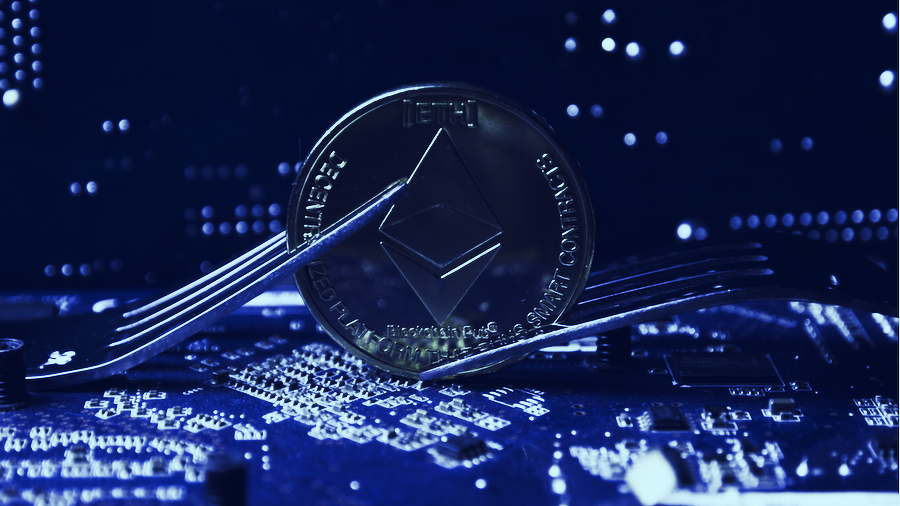No one knows more about Ethereum network upgrades than Tim Beiko. A developer with the Ethereum Foundation, Beiko runs the core developer meetings and has been running point on the upcoming London hard fork.
Expected to go live August 4, London is a network upgrade that encompasses five Ethereum Improvement Proposals (EIPs), which are changes to the code that must be agreed to by stakeholder consensus.
But although people have likely heard about some of the elements of the London fork, in particular the much-anticipated EIP-1559, they may be unclear as to what else is in it.
Beiko dropped by The Decrypt Daily podcast on Wednesday to share more about the hard fork and walk through the changes.
EIP-1559
The change that has garnered the most excitement and controversy is EIP-1559, which has two components. First, it adds a base fee to every transaction on the Ethereum blockchain. While that sounds onerous, it actually should have the effect of lowering overall transaction costs because it “helps you better estimate your fee,” said Beiko. The current system relies on a sort of live auction to push transactions through, meaning that people can overpay.
Beiko said it’s significant, but not world-changing: “Think like a 20% reduction, not like a 20x reduction.”
The second aspect of EIP-1559 is that the fee no longer goes to miners, the people all around the world who run the hardware that validates and processes transactions. Instead, it’s burned, meaning the ETH is sent to an inaccessible address. By taking coins out of circulation, this creates what Beiko called “deflationary pressure on the network.” In other words, the price of ETH might go up as supply becomes more limited.
EIP-3198
EIP-3198, which Beiko called a “kind of sister proposal to 1559,” essentially extends the latter’s user experience improvements to smart contracts. Smart contracts are pieces of computer code that carry out instructions on the Ethereum blockchain. They’re what makes it possible, for example, for decentralized finance (DeFi) apps to cut out the middleman while supplying people with loans or interest.
With EIP-3198, transactions that utilize smart contracts shouldn’t be overpaying on fees.
EIP-3529
While EIP-1559 has gobbled up most of the attention, EIP-3529 may have just as big of an impact on the network. According to Beiko, the proposal “removes refunds for certain opcodes.” He went on to explain, in plain English, what’s behind the EIP. Currently on Ethereum, you can get a refund on gas, which refers to the fee paid for transactions, when cleaning up after yourself on the network. Smart contracts and related data can clog up the network, after all.
While the gas refund for clean-up sounds good in practice, Beiko said, “What we’ve seen in practice is most of the refunds are not used for this. They’re used for when the gas fees become low on the network, people will fill up the network with basically junk data. And then when the gas fees are high, they’ll delete all that junk data and get those refunds back.”
Removing or reducing the refunds through EIP-3529, he said, will make the network more stable.
EIP-3541
In Beiko’s words, EIP-3541 “doesn’t do a lot itself.” It mostly sets the table for future updates, reserving some space within the network to create new types of smart contracts. “It’s like a neat trick to add new functionality to the [Ethereum Virtual Machine] without breaking anything,” he said.
Expect a proper blog post out tomorrow, but if you are eager to update your Ethereum node for London ASAP, all teams now have a mainnet-compatible release out
Linked below
— Tim Beiko | timbeiko.eth
(@TimBeiko) July 14, 2021
EIP-3554
Beiko did not address the final code change included in the London fork, probably because it’s become a standard part of Ethereum hard forks. EIP-3554 would delay what’s known as the “Difficulty Bomb” to December 2021. The bomb, as it were, increases the difficulty for miners who race to solve complex cryptographic problems and earn ETH. The upshot is that the network would become slower.
In reality, the bomb was put there intentionally in 2015 to incentivize developers to transition away from mining altogether. With Ethereum 2.0, which has yet to become fully operational, the blockchain will take that step, moving from proof of work to proof of stake, in which people dedicate their ETH to the network in order to secure it.
EIP-3554 essentially defuses that bomb, providing a bit more time for developers to get to ETH2.
And once we do get to ETH2, many of these code changes will become irrelevant.


























